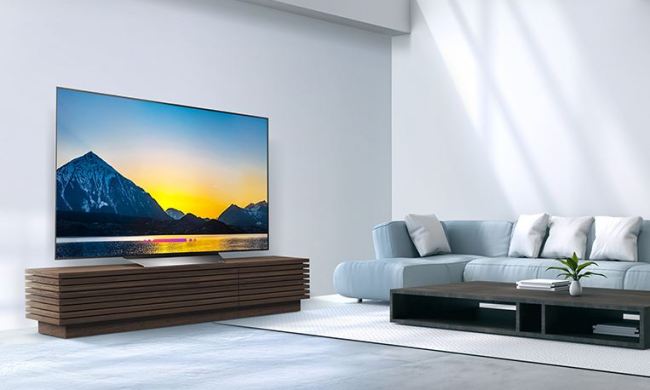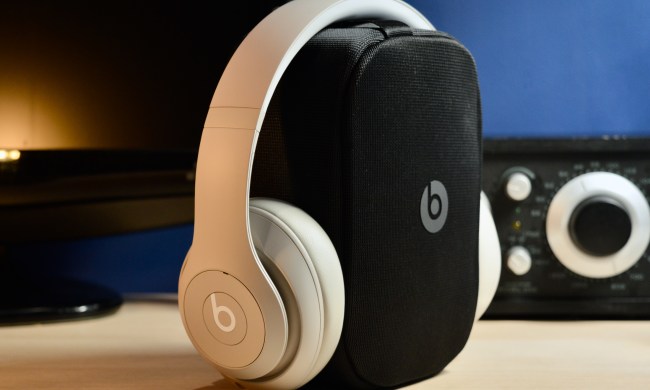
“The H15 are a very light pair of headphones - barely noticeable when worn.”
- Rich, warm bass
- Smooth, detailed midrange
- Attractive design
- Extremely comfortable
- Sculpted treble reduces clarity and excitement
- Lower register occasionally too thick
Last year, veteran audio company Paradigm succumbed to the ever rising tide that is the headphone industry, releasing its own contribution to the field, the Shift E3M. While not quite a homerun, we considered the upper tier in-ear a respectable first effort.
This January at CES 2013, Paradigm showcased its latest additions to the Shift line, the H15 NC noise-cancelling headphones ($300), and the H15 noise- isolating headphones ($200).
Though there’s rarely much call for fanfare over another entry into the headphone landscape these days, Paradigm is a different breed and at least deserving of some consideration. The family-run company has a 30-year track record in speaker design. Unlike many of its competitors, it manufactures its products at its own facility in Ontario, Canada – and we never take a company with a 36,000 cubic ft. anechoic chamber lightly. With that in mind, we recently sat down with the H15 noise-isolating headphones to see what Paradigm’s audio engineering experience resulted in. Here’s what happened.
Out of the box
As we removed the rubberized H15 from its two-piece box, we were struck by its succinct design. The headphone’s smooth, all-black exterior is interrupted only by two metal discs that adorn the ear pieces and a trio of silver logos. Along with the headphones we found a fabric carry bag containing a removable headphone cable and an airplane adapter.
Features and design
Paradigm’s newest addition to its headphone line follows the minimalist/executive design trend we’ve seen in similarly priced on-ear headsets like the Harman Kardan CL and the Bower & Wilkins P3, though it has forgone their slim metal framing for a rubberized-plastic exterior. The H15’s succinct headband is soft to the touch, and carries a thick cushion along its underbelly, covered in smooth leatherette.

Each of the H15’s rectangular earpieces connect to its headband on an extendable axis and rotate a full 90 degrees to lay flat for easy travel. The earpieces attach at a slight angle, providing an ergonomic fit over the ear. The interior of each earpiece is cushioned with a spongy pad, also cloaked in leatherette.
The H15’s removable cable attaches to the left ear cup and extends an ample 4 ft. in length. About a foot beneath the earpiece, the cable is interrupted by a slim 3-button iOS control pad and microphone. The far end of the cable is terminated with a 90-degree, gold-plated 3.5mm jack.
Comfort
The H15 is a very light pair of headphones – barely noticeable when worn. The silky padding that adorns both the headband and the earpieces is exorbitantly thick, and the angled earpieces seem to rest perfectly against the outer ear, allowing comfortable listening for hours at a time. Our only gripe – and a minor one at that – was with the H15’s lax level of clamping force which allows them to break loose from sudden movement.
Audio performance
We found the H15 delivered a pleasant, “warm and fuzzy” sound signature, notable for its velvety low end, and soft, sculpted upper register. Though the highly voiced sound of the H15 won’t be for everyone, we think many listeners will enjoy its comfortable, relaxed approach to music reproduction, especially with so many competing headsets taking such an aggressive sonic stance these days.
If a warm, ruddy sound signature is your bag, the H15 are definitely worth a listen.
As we listened on, we noticed the rich character of the bass carried over into the H15’s midrange response as well. Acoustic guitars tended to have a golden sheen that carried some pleasant body, and piano was often creamy and smooth throughout its range. However, while midrange instrumentation came through fairly clear and articulate (especially vocals), we began to notice that a carving of the upper frequencies rendered the attack of many instruments with a dull, soft touch.
The effect was most noticeable with percussion. Hand drums, toms, and especially snare drum were all consistently reproduced with a rounded thud which served to rob the music of excitement. Crash cymbals, too, were missing their usual pristine sparkle, almost as if they were being infused with an underlying darkness. We didn’t find this treatment to be overly troublesome, but we couldn’t help but feel the rocking snap of the rhythm section never seemed to get off the ground.

Though acoustic guitar on tracks like Nickel Creek’s “The House of Tom Bombadil” came through with clean detail, we noticed a bawdy thickness to the chuck picking of mandolin that wasn’t quite as clean as we’d like. Switching to electronic music, we found instances of some synth tones getting buried in the mix. Certain higher synth patches seemed unable to rise above the fray due to a lack of clarity in the edge of the attack.
With that said, we couldn’t help but revel in the blushing warmth of the H15’s bass and midrange. Though we prefer a more linear approach, we enjoyed some moments of brilliance in the H15’s velvety foundation. And, fortunately, the shaved-off attack of the treble rarely compromised the detail of the midrange frequencies.
Conclusion
While we lamented the absence of sparkle in the treble, we still think there’s a lot to love about the H15. The H15’s smooth sound and ample noise isolation are encapsulated in an attractive, comfortable design. Those looking for more accuracy in the treble may want to check out the Harman Kardon CL or Bower & Wilkins P3 we mentioned earlier. Still, we think many listeners will find Paradigm’s H15 to be a worthy vessel in which to become comfortably engulfed in music. If a warm, ruddy sound signature is your bag, the H15 are definitely worth a listen.
Highs
- Rich, warm bass
- Smooth, detailed midrange
- Attractive design
- Extremely comfortable
Lows
- Sculpted treble reduces clarity and excitement
- Lower register occasionally too thick






